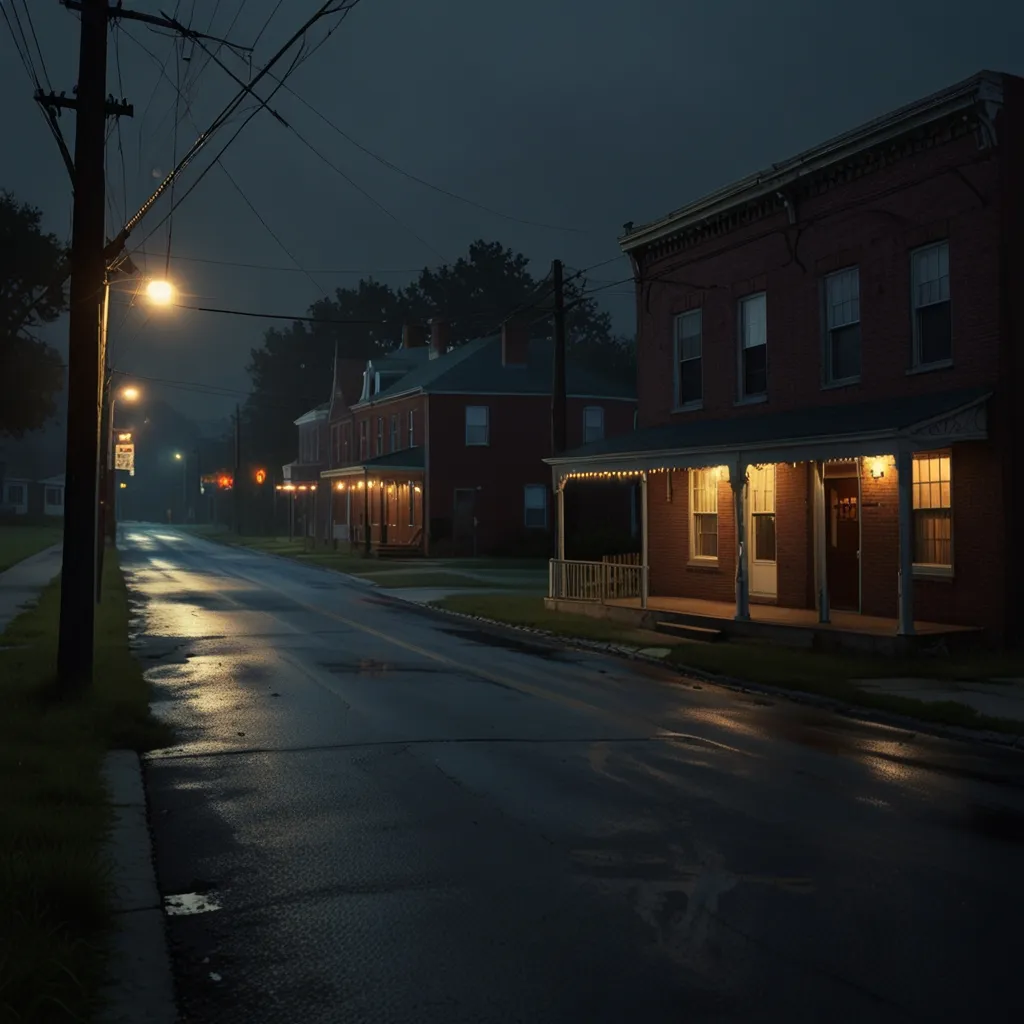Living in a small town can be idyllic – everyone knows each other, there’s a strong sense of community, and life seems simpler. But in the late 1970s, the residents of Circleville, Ohio, experienced the dark side of close-knit community life. For over two decades, Circleville became the backdrop of a haunting mystery that revolved around anonymous letters and threats, leading to ruined lives, broken families, and even death.
Circleville, about 25 miles south of Columbus, was your typical American small town. It was the kind of place where doors were rarely locked, and gossip traveled quickly. Everyone had their secrets, but in Circleville, those secrets weren’t safe for long. This bizarre and unsettling story kicked off in 1976 when locals began receiving anonymous letters. These weren’t just any letters; they were written in strange block letters and were filled with intimate details about the recipients’ lives, things most of them thought were private.
The letters were mean, accusatory, and sometimes downright threatening. Gordon Massey, the superintendent of the local school district, got one of the first letters. It accused him of inappropriate relationships with female staff members and threatened to expose him. More letters followed, each becoming more aggressive. The writer even mentioned cutting the brake lines on Massey’s car to make him stop. Each letter was postmarked from Columbus, adding another layer of unease, as no one knew who among them could be the writer.
Then came the turn of Mary Gillespie, a bus driver in the district. Mary was respectable, had a loving family, and was generally well-liked. But in March 1977, she received an eerie anonymous letter warning her to stay away from Gordon Massey and threatening her children. This shook her, but she chose not to tell her husband, Ron, immediately. More letters addressed to her arrived, each revealing more personal information, which was terrifying because the writer seemed to know everything about her – her route, her schedule, her family.
Mary hoped the letters would stop, but they didn’t, and soon Ron started getting lettered too. The letters to Ron were cruel, accusing Mary of infidelity with Gordon Massey and threatening his life if he didn’t act. Signs started cropping up around town, accusing Massey of far worse, including an affair with Mary and improbable ones with her underage daughter. It got so bad that Ron would drive around town, taking down these offensive signs so his family wouldn’t see them.
The situation escalated dramatically in August 1977. After a series of disturbing phone calls, Ron told his family he knew who the letter writer was, grabbed his gun, and drove off in his truck. Minutes later, he was found dead in his pickup truck, which had crashed into a tree. The sheriff declared it an accident due to Ron’s high blood alcohol level, but the Gillespie family found this suspicious, especially since Ron wasn’t known to drink heavily and there was an unexplained bullet casing found at the scene.
The town was now gripped by fear and intrigue. Despite the authorities’ insistence, many believed Ron had been killed by the letter writer or forced off the road. And the letters didn’t stop. They continued to torment Mary and other residents, causing endless distress.
Desperate for answers, Mary and Ron Gillespie sought help from their family. They shared the letters with Ron’s sister and her husband, Karen and Paul Freshhauer, hoping to identify the writer. Mary thought one of her coworkers, David Longberry, might be behind it. He had shown an interest in her, which she had rebuffed. Paul wrote warning letters to Longberry, and the harassment temporarily stopped. But this peace was short-lived.
In 1983, things took a darker turn. Mary had had enough of the vile signs about her and her family and decided to take one down. This particular sign was rigged with a booby-trapped gun, set to fire if the sign was removed. Fortunately, Mary noticed the setup before it was too late and called the police. The gun’s serial number led back to Paul Freshhauer, who claimed it had been stolen. He was arrested and convicted for the attempted murder of Mary.
Even with Paul behind bars, the letters kept coming. They were still sent from Columbus and continued to be as menacing as ever, leading many to question whether Paul was indeed the writer. Paul maintained his innocence, and his case drew widespread attention and skepticism over the years.
Speculations abound about who the real letter writer was. Some believe David Longberry was behind it initially, but others suggest Karen Freshhauer, Paul’s ex-wife, might have framed him during their bitter divorce. Karen’s behavior during the divorce was suspicious, and some believed she had multiple motives, including a deep hatred for Paul and a possible desire to inherit everything if he was convicted.
Despite these theories, the true identity of the Circleville letter writer remains a mystery. The case attracted the interest of many crime shows, podcasts, and even the FBI, but no definitive conclusion has been reached. Each suspect had plausible motives and means, but nothing conclusive enough to solve the puzzle.
Paul Freshhauer passed away in 2012, still asserting his innocence. In the end, Circleville’s mystery wasn’t just about the letters; it was a window into how suspicion and fear can alter a community. The investigation left the town with questions that may never be answered and reminded everyone that sometimes, the scariest secrets are those that lurk just beneath the surface of small-town life.
The story of the Circleville letters shows that in the midst of uncertainty, everyone is vulnerable, and no one wins when trust is eroded. The case remains a grim reminder of how anonymous threats can terrorize a community and the lengths to which some will go to hide the truth. The town of Circleville has moved on, but the ghost of the letters still lingers, a testament to a mystery that, for many, is still not resolved.
The takeaway from this haunting tale is not just about solving who did it but understanding the devastation such a campaign of fear can have on a community. Whether it’s the investigation that feels botched or the unsettling reality of how much someone could know about you, the Circleville letters are a masterclass in real-life suspense and tragedy, showing that sometimes, reality is stranger – and scarier – than fiction.






